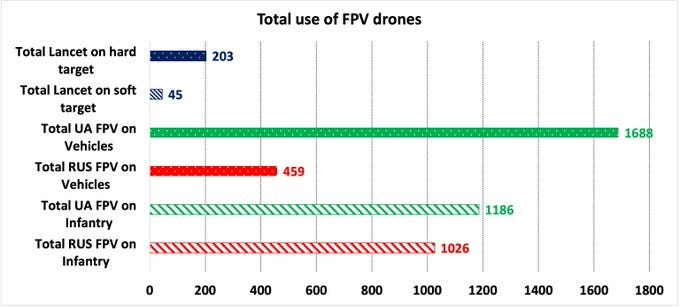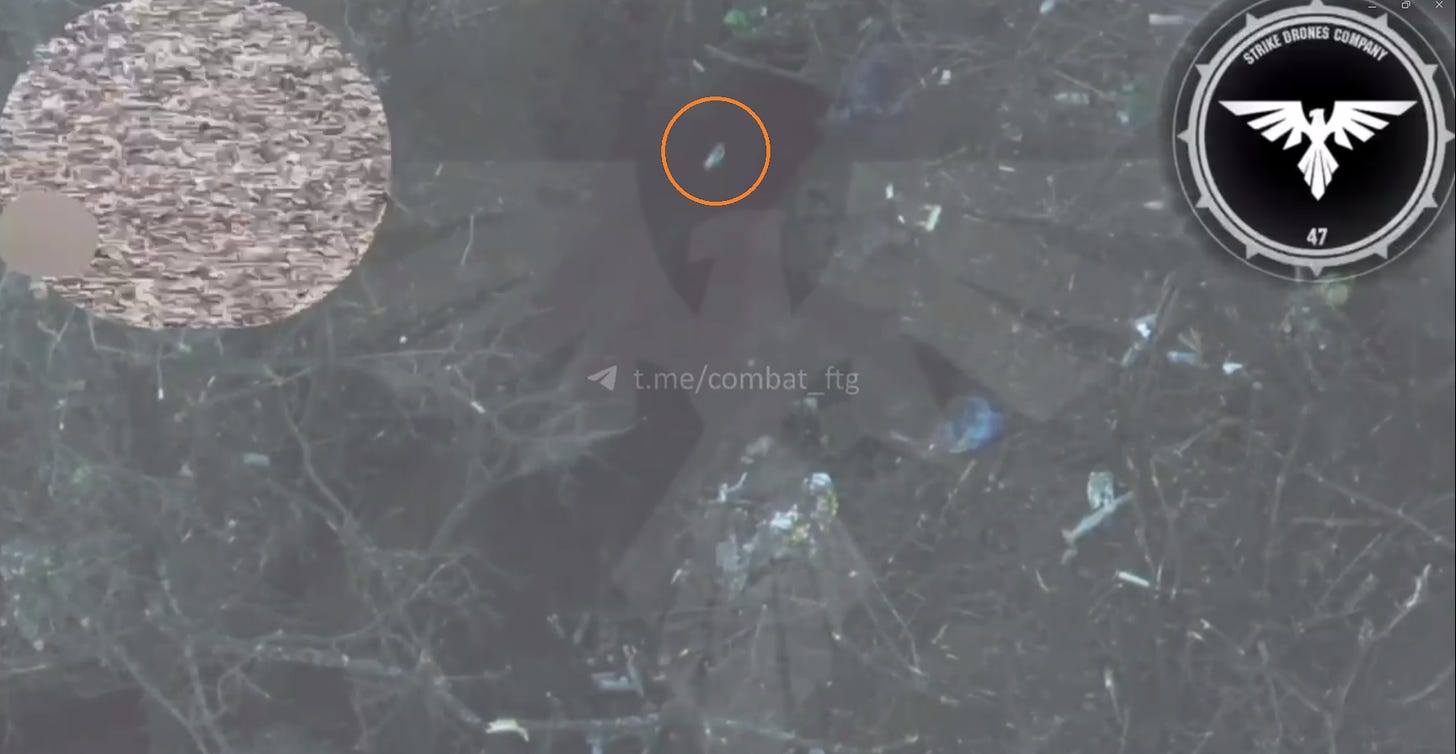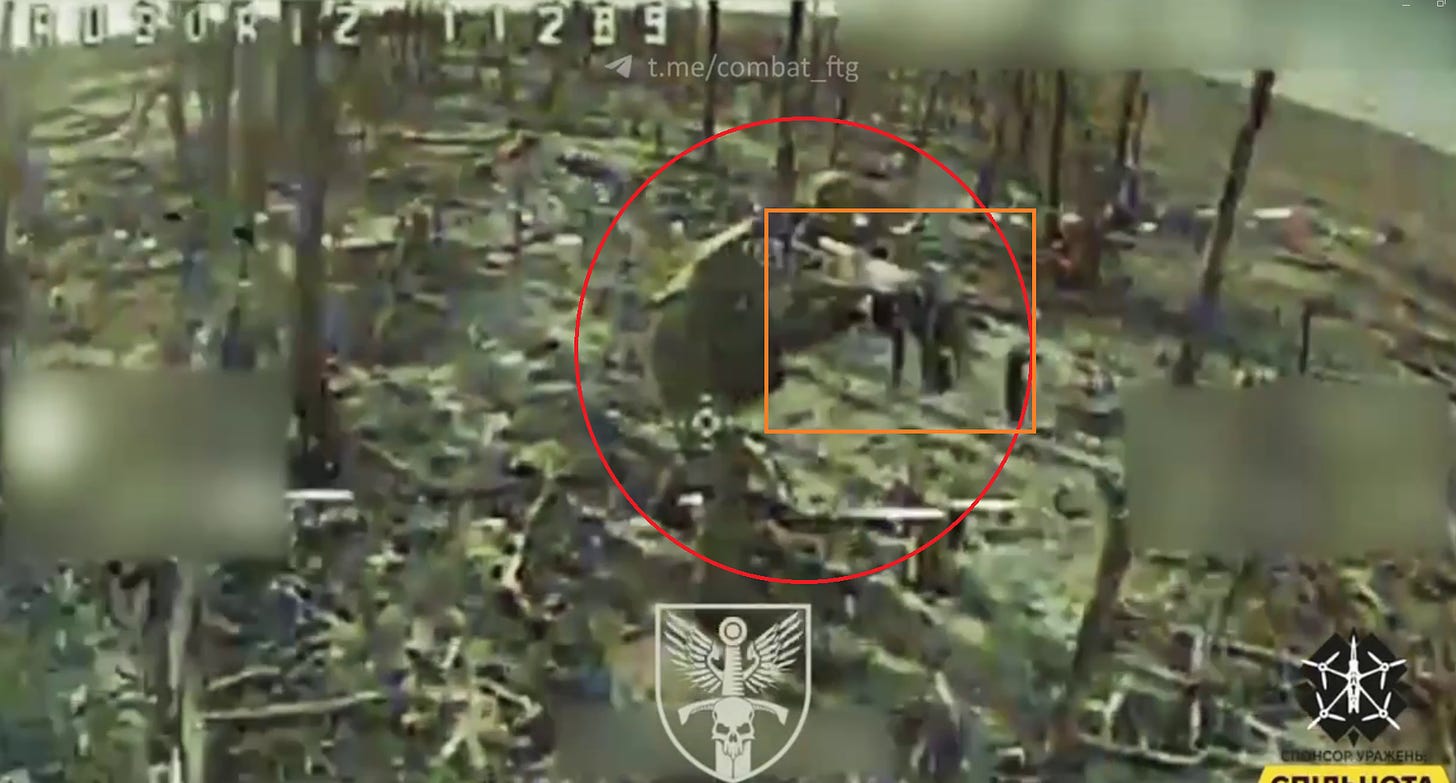The Year of the Drone
Drones are already replacing artillery. What happens when artillery shells run out for both sides in 2024?
2024 is going to be novel.
Both Russia and Ukraine are running out of conventional artillery shells, though Russia is still firing five times more shells (10,000 per day) compared to Ukraine (2,000 per day). As other observers point out, Ukraine was expected to run low on shells this winter; the summer fighting was only made possible by South Korean shipments of 155mm artillery. The good news is that the North Korea shells donated to Russia are also finite, but neither side will be able to produce enough shells to stave off shell hunger until 2025.
And so, in the widespread absence of conventional warfare’s most important weapon, Stalin’s famous “God of War”, the artillery, 2024 will be the Year of the Drone.
Obviously, the use of drones in this war is already extensive and well-documented. Most are familiar with the bird’s-eye perspective of bomber-drones, but increasingly common are first-person view (FPV) drones, also referred to as kamikaze drones. These variants are regularly used by Russia and Ukraine to destroy things — people, vehicles, and defensive fortifications. They are now common enough that both sides employ FPV drones to simply destroy buildings and bunkers to prevent their use by the enemy.
Below is a useful chart tallying the number of FPV drone strikes conducted by each side by target (published on Jan 3).
The data indicates that Ukraine has the drone advantage generally, but Russian forces have used FPV drones to decisive effect. During the 2023 Ukrainian counteroffensive, after losing artillery superiority to a Ukrainian counterbattery campaign, Russia managed to stabilize their defenses near Robotyne with extensive use of FPV drones. In Avdiivka, many Russian advances came from after FPV drones and glide bombs simply made defensive positions uninhabitable.
Kamikaze drones have a few key advantages over artillery: 1) a quadcopter is cheaper than a standard 155mm shell; 2) drones can deliver a payload with much greater accuracy; and 3) the equipment needed to launch a drone has a much smaller footprint than something like an M777 (the standard US 155mm artillery piece), making counterbattery fire more difficult for the enemy.
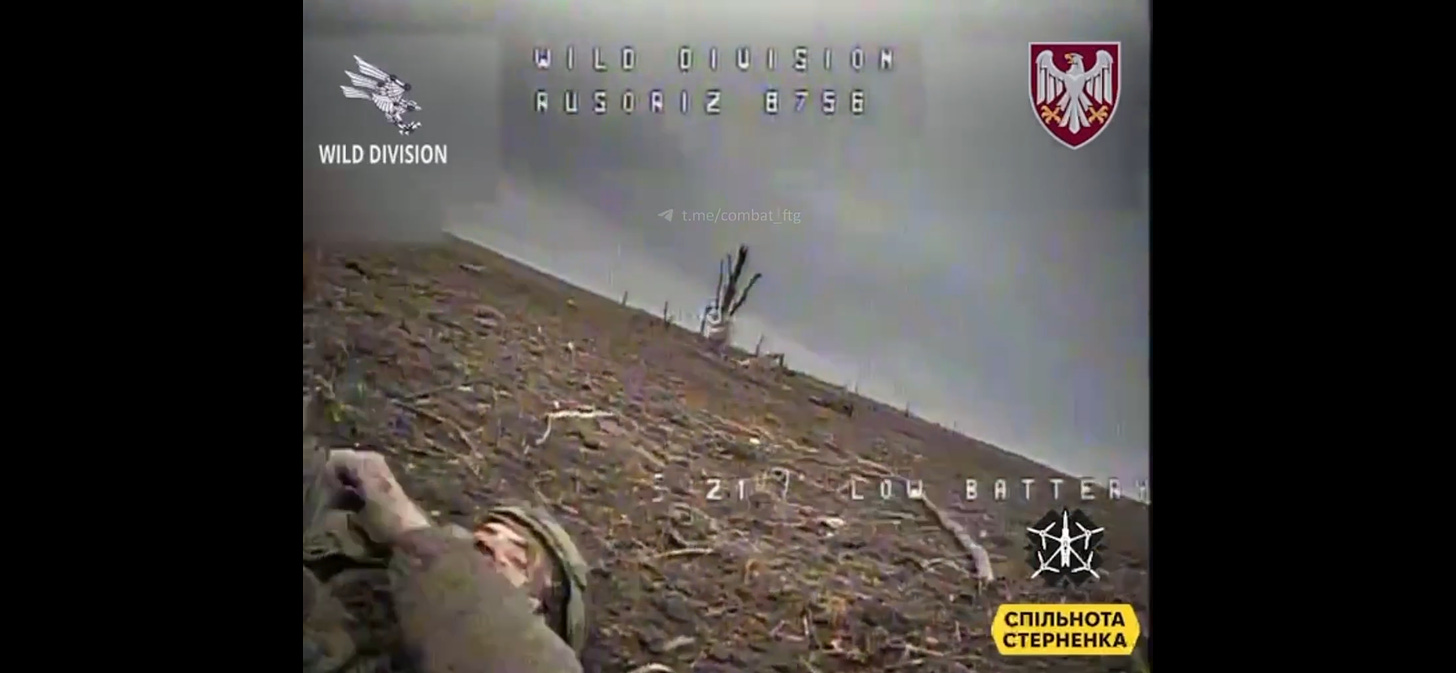
Already, the number of videos capturing Ukrainian artillery strikes is noticeably decreasing, while videos of FPV drones taking out whole squads are becoming not uncommon. This is because centuries of defensive technology and concepts are now defunct — tanks, trenches, and bunkers do not provide the same protection against drones as against artillery. The chances of landing a good hit inside a trench with artillery is probabilistic. It could take one or it could take a dozen shells to accomplish what this single FPV drone piloted by the Strike Drones Company (with the 47th Mechanized) achieved:
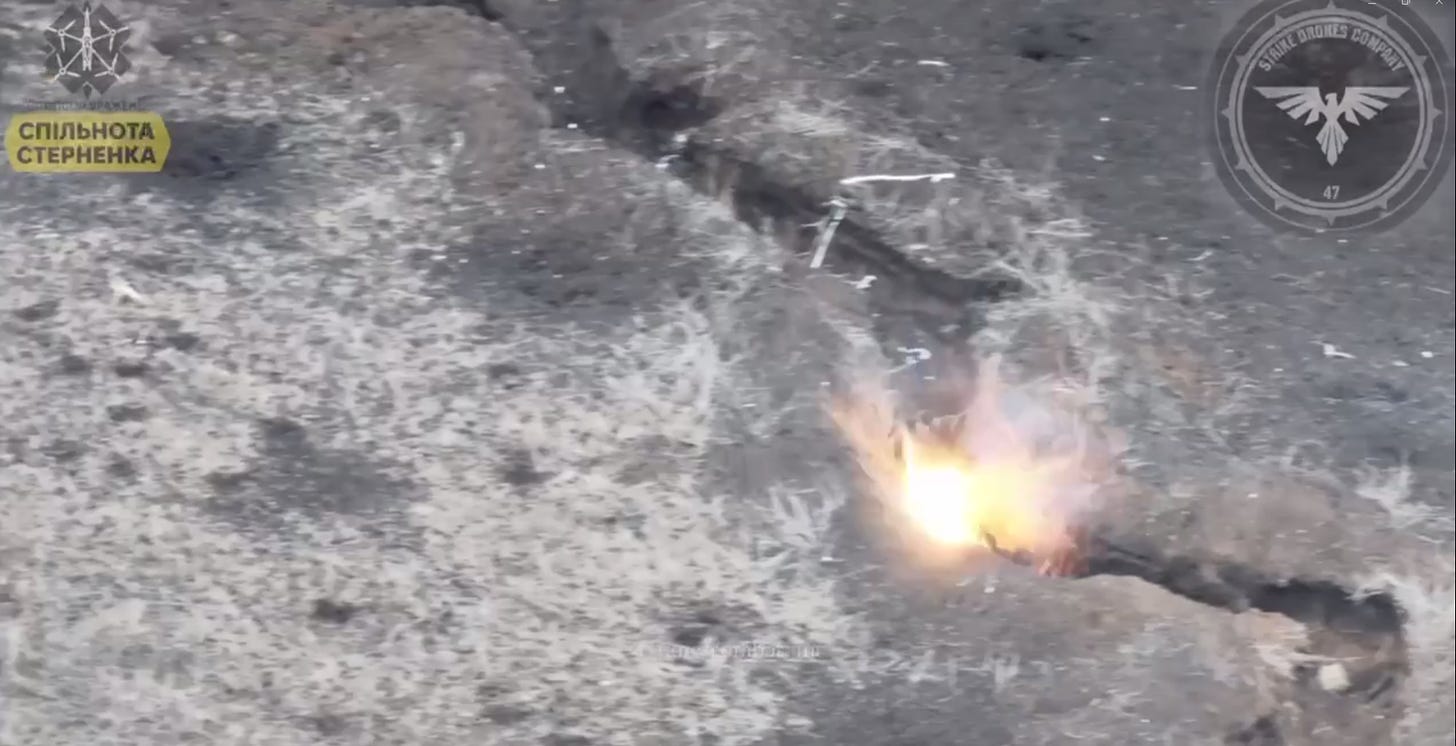
FPV drones are like artillery shells that grew wings and fly. Centuries of defensive technology and concepts are now outdated; tanks, trenches, and bunkers do not provide the same protection against drones as against artillery. Dugouts are excellent places to hide from heavy bombardment, but to drones, they are juicy targets.
Here’s another video from Avdiivka, also by the Strike Drones Company. In it, a reconnaissance Ukrainian drone spots a Russian drone operator preparing an attack drone near a dugout.
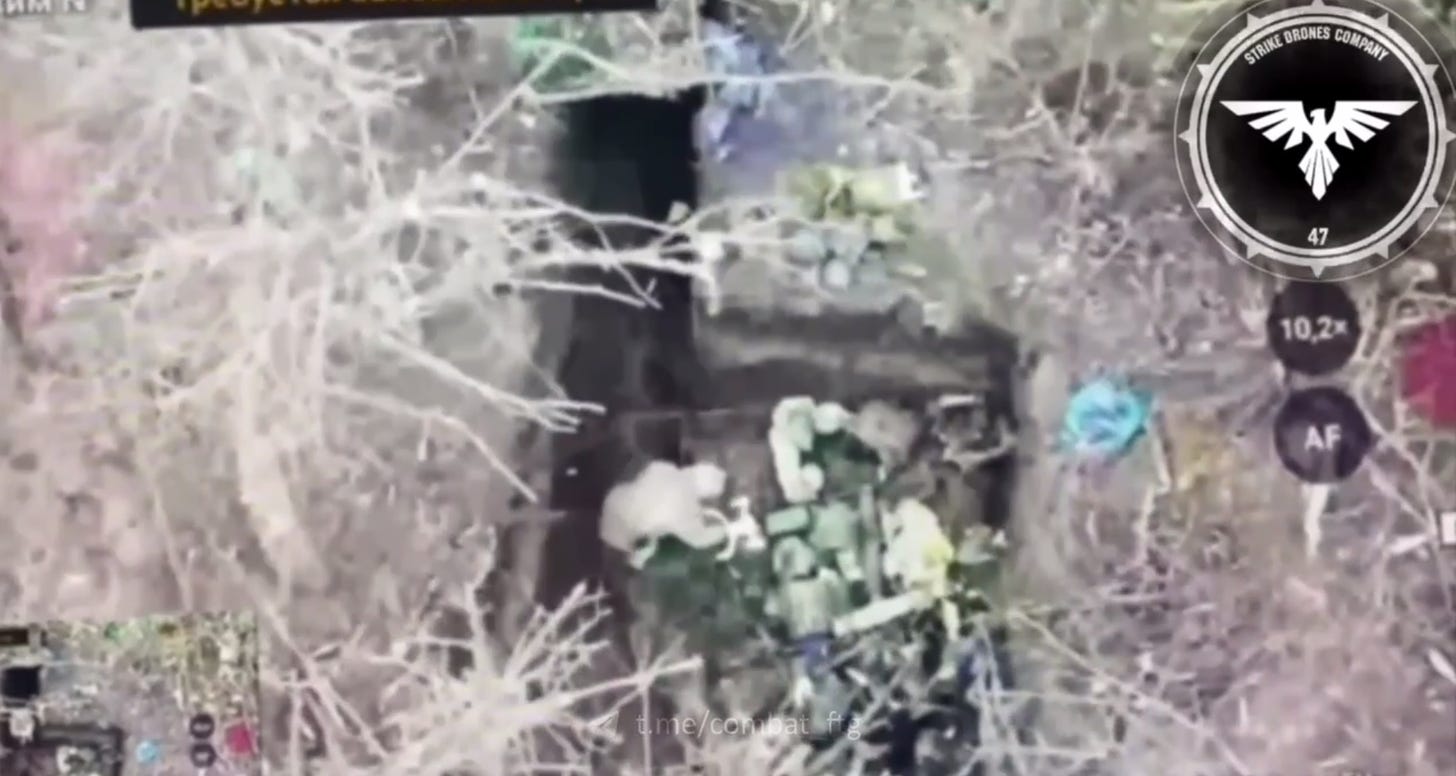
After the position is reported, a different drone operator prepares an FPV drone with high explosive. Meantime, the recon drone continues to monitor the Russian drone operator, now piloting the drone from inside the earthworks. Shortly after the drone pilot is first spotted, the kamikaze drone flies through the open door, detonating inside. The recon drone is able to confirm a direct hit.
Trenches and dugouts are now death traps.
The obvious defensive solution is to dig deeper. From Don Hill’s comprehensive (and highly recommended) weekly newsletter, dated January 8, 2024:
One of the reasons why Ukraine held onto the last 10% of Marinka for so long is that they dug fortifications in the basements of the ruined houses and connected those basements with tunnels, trenches and holes between walls.
Tunnels are already important part of the war in Ukraine. They help hide movement — including from thermal imaging — while providing a physical barrier against both flying steel and radio waves. Drones struggle to communicate with their handlers while underground. In October 2023, a tunnel complex in front of Novoprokopivka helped halt Ukraine’s summer counteroffensive, and later that month,Russians dug a tunnel right up to Ukrainian positions in Avdiivka’s industrial zone before assaulting.
We should also expect that digital countermeasures like electronic warfare (EW) and anti-air (AA) systems will also assume greater importance. Luckily for Ukraine, the ongoing interdiction campaign using HIMARS continues to knock out several of Russia’s remaining EW and AA systems each week.
War is changing. Artillery has been the the focal point of conventional warfare for over a century; its corollary, the trench. In an astonishing testament to the intensity of this conflict, both Russia and Ukraine have exhausted their respective stockpiles of ammunition. In the absence of shells, the focus will shift to drones and tunnels.
The Year of the Drone is the beginning of a new warfighting era.



